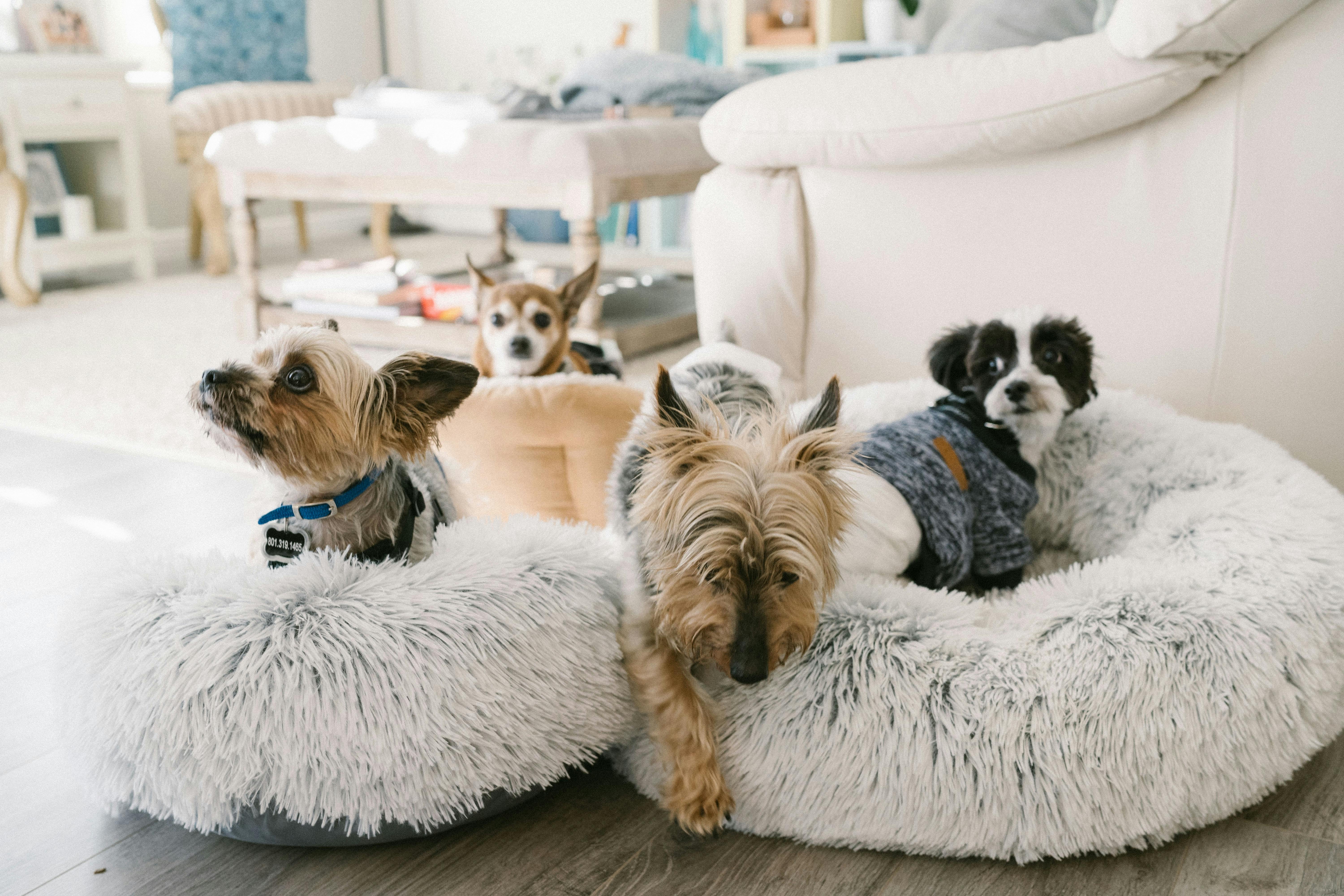
Written by Emily Bayne
Veterinary reviewed by:
Published: 05/17/2021, edited: 10/05/2022
Overview
So you're a new pet parent. You've probably already picked a collar, gotten Fido's shots, and started educating yourself on dog training — but have you given much thought to whether your house is puppy-ready? It's second nature for parents to prepare for babies by baby-proofing the house, but puppy-proofing isn't as widely thought of.
Puppies are curious creatures, and this inquisitive nature gets them in trouble from time to time. Things you would never consider as being dangerous are suddenly a big problem with a teething puppy around. Luckily, we've compiled this checklist to help ensure your home is safe for your new fur-baby.
Store your medications safely
Meds are some of the most dangerous items lurking in our homes. Ingestion of human medication can have deadly consequences for dogs. Even something as innocent as a Tylenol tablet can wreak havoc on a young puppy's body.
You may think that a child-proof cap can keep your pup out, but a determined (or teething) pupper can easily chew through these. Keep your pup safe by storing prescription and over-the-counter medications in a lockbox or out-of-reach medicine cabinet.
Lock your trash cans
Trash cans harbor lots of tasty leftovers, but they also harbor germs and potentially dangerous items like batteries. Unfortunately, lids aren't always able to keep puppies out. Keep your puppy out of the garbage by installing locking mechanisms on the lid of your trash can.
Round up any choking hazards
Relocate small items like jewelry, trinkets, and spare change. These could pose a choking hazard, or in the case of coins, cause zinc poisoning in dogs. Pay close attention to choking hazards at your dog's eye level. Crawl around on the floor to see things from a different perspective and locate any potential hazards.
Put household chemicals away
Cleaning supplies and antifreeze pose serious risks to dogs. Place household chemicals either up high, in a locking tote, or a locked cabinet. There are all sorts of cabinet locks available online, from traditional straps and sliding locks to adhesive locks and fancy magnetic assemblies.
Lock your toilets
Toilet bowl water can be tempting to a thirsty (or just curious) pupper, but it can also be dangerous if you've recently used cleaning chemicals. Invest in a locking device to keep the lid closed and pups at bay.
Place a gate in off-limits areas
If you're unable to puppy-proof a certain room in your home, you might want to invest in a baby gate. Baby gates are relatively inexpensive and can save you a lot of headaches in the long run.
Research your house plants
Your palm plant might look pretty, but it can be pretty dangerous for hungry doggos. A little leafy snack can result in vomiting, diarrhea, or even organ failure if they eat enough.
To be on the safe side, relocate plants that are toxic to dogs. Toxic plants include, but are not limited to:
- philodendrons
- dieffenbachia
- aloe
- dumbcane
- sago palms
- cyclamen
- rhododendrons
- tulips
- lily of the valley
- oleander
- autumn crocus
- Japanese yew
Research each of your plants to see if they have toxic properties, and if you're unsure, it might be a good idea to relocate them anyway.
Contain your window blind cords
Window blind cords can easily become wrapped around your dog's legs or neck and hurt them. Luckily, there are plenty of safety devices on the market to help you keep your cords contained. Cord roll-ups, cleats, and wraps are all inexpensive solutions to cord management.
Rethink pest traps and insect bait
Mice and insects aren't the only critters that pest traps and bait can attract. That slice of cheddar can look really appealing to a growing puppy. Keep your pup from getting snapped by a spring-loaded mousetrap — or worse, poisoned by toxic bait traps — by removing these from your home. If you must use mouse traps, pick a catch-and-release style trap. Not only are these safe around pets, but they're also reusable and more humane.
Relocate your batteries
Besides being a choking hazard, batteries can cause severe illness and even death if swallowed by a puppy. Cylindrical batteries may cause battery acid burns and heavy metal poisoning. Button batteries are particularly dangerous since they can cause current-induced necrosis in the digestive tract. Store extra batteries in a high cabinet, and keep remotes out of paws' reach.
Manage your electrical cords
Puppies will chew on anything when they are cutting teeth — electrical cords included — so you'll need to take some precautions to make sure your puppy doesn't get their mouth on them.
Unplug devices you aren't using, and use cable management for things that must stay plugged in. Cord concealing strips are perfect for this, but some strategically-placed utility hooks can work just as well.
Comments (0)
Leave a comment
Related articles
About Wag!
© 2025 Wag Labs, Inc. All rights reserved.
About Wag!
© 2025 Wag Labs, Inc. All rights reserved.
Security
© 2025 Wag Labs, Inc. All rights reserved.